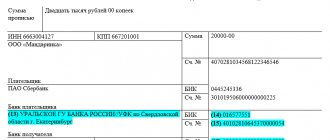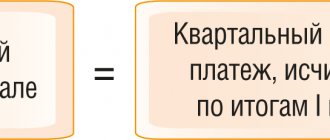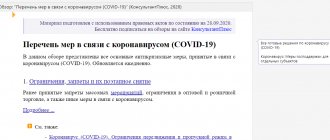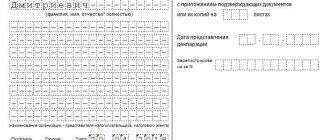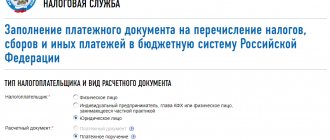Managers of enterprises carrying out economic activities on the territory of the Russian Federation are obliged to be attentive to environmental protection issues. Those involved in the industrial production of various goods must pay an environmental fee. 2021 brought some changes to the payment procedure, list of types and rates. It is very important to correctly apply the legislation to ensure timely and full payment to the budget.
Tax entry deadline
One of the reasons for introducing the new tax is the redistribution of responsibilities for collecting funds from organizations that have a negative impact on the environment.
Until 2021, the responsibility for collection fell on the relevant agency – Rosprirodnadzor. The government agency, which did not have payments as its main task, achieved less than half of the required volume of compensation for damage caused to the environment.
The transfer of responsibilities to the Federal Tax Service, which has the necessary experience in collecting debts and organizing the payment of mandatory payments, should lead to an increase in budget revenues. In theory, this will provide new resources to protect the environment. All funds collected will go into the general budget, from which money will then be allocated for environmental protection.
In addition to changes in the recipient of payments, the type of payment itself has changed: the environmental fee has become a tax. The new legislative provisions largely duplicate the content of the current federal law of January 10, 2002 No. 7-FZ (Article 16). According to the drafters, the environmental tax should maintain the status quo for organizations making payments. The changes will only affect unscrupulous enterprises that are required to make payments but do not do so. From 2021 they will be responsible to the tax authorities.
From January 1 to March 1, 2021, there will be a transition period during which Rosprirodnadzor will transmit data on organizations that have a negative impact on the environment to the Federal Tax Service. Over the next 10 years (until December 31, 2029), a reduced penalty interest rate of 10% will apply for defaulters. Changes to the Tax Code are expected to come into force on January 1, 2021.
Categories
The article reveals the issues of calculating and collecting fees for the disposal of production and consumption waste, taking into account the latest legislative changes[1].
In accordance with Art. 16 of the Federal Law of January 10, 2002 No. 7-FZ “On Environmental Protection” (as amended on July 3, 2016; hereinafter referred to as Federal Law No. 7-FZ), fees for negative impacts on the environment (hereinafter referred to as NVOS) are charged including including for the storage and disposal of production and consumption waste (waste disposal)[2].
DICTIONARY
According to Art. 1 of the Federal Law of June 24, 1998 No. 89-FZ “On Production and Consumption Waste” (as amended on December 28, 2016; hereinafter referred to as Federal Law No. 89-FZ): • production and consumption waste (hereinafter referred to as waste) - substances or items that are formed in the process of production, performance of work, provision of services or in the process of consumption, which are removed, intended for removal or subject to removal in accordance with this Federal Law; • waste disposal - storage and disposal of waste; • waste storage - storage of waste in specialized facilities for a period of more than 11 months for the purposes of recycling, neutralization, and burial; • waste disposal - isolation of waste that is not subject to further disposal in special storage facilities in order to prevent the release of harmful substances into the environment.
Persons obligated to pay fees
Based on para. 1 clause 1 art. 16.1 of Federal Law No. 7-FZ, payers of fees for NVOS are legal entities and individual entrepreneurs carrying out economic and (or) other activities that provide NVOS on the territory of the Russian Federation, the continental shelf of the Russian Federation and in the exclusive economic zone of the Russian Federation.
At the same time, legal entities and individual entrepreneurs carrying out economic and (or) other activities exclusively at Category IV facilities that provide a minimum NVOS are exempt from paying fees .
Accounting for persons obligated to pay a fee is carried out when maintaining state records of facilities providing NVOS.
BY THE WAY
When waste is accumulated for the purpose of disposal or neutralization within 11 months from the date of generation of this waste, no fee is charged for its disposal.
In accordance with paragraph. 2 p. 1 art. 16.1 of Federal Law No. 7-FZ, payers of fees for NWOS when disposing of waste, with the exception of municipal solid waste (hereinafter referred to as MSW), are legal entities and individual entrepreneurs whose economic and (or) other activities generated waste. Payers of the fee for the NVOS when placing MSW are regional operators for the management of MSW, operators for the management of MSW, carrying out activities for their placement.
ON A NOTE
In relation to reporting for 2021, in the absence of regional MSW management operators, the payer of the fee for MSW placement is the MSW management operator.
According to paragraph 7 of Art. 16.3 of Federal Law No. 7-FZ, when placing waste at waste disposal sites (hereinafter referred to as WSO) that do not provide NVOS, no fee for waste disposal is charged.
DICTIONARY
Waste disposal facilities are specially equipped structures designed for waste disposal (landfill, sludge storage facility, including a sludge pit, tailings storage facility, rock dump, etc.) and including waste storage facilities and waste disposal facilities (Article 1 of the Federal Law No. 89-FZ).
It is possible to eliminate NVOS from waste disposal sites through environmental protection measures, technical solutions and structures that ensure environmental protection.
According to the Regulations on confirming the elimination of the negative impact on the environment of waste disposal facilities, approved by Decree of the Government of the Russian Federation dated May 26, 2016 No. 467, the exclusion of NEVOS of waste disposal facilities is confirmed by the results of monitoring the condition and pollution of the environment carried out by the owners of waste disposal facilities, as well as persons in possession or in whose use there are OROs, in the territories of OROs and within the limits of their impact on the environment.
The procedure for monitoring the condition and pollution of the environment by owners of waste disposal facilities, as well as persons who own or use waste disposal facilities, in the territories of waste disposal facilities and within the limits of their impact on the environment, was approved by the Order of the Ministry of Natural Resources of Russia dated 03/04/2016 No. 66.
The monitoring results are presented in the form of a report.
The justification for excluding the NVOS of waste disposal sites is the data of instrumental measurements using technical systems and devices with measuring functions, indicating compliance with environmental quality standards established for chemical, physical and biological indicators of the state of the environment, incl. standards for maximum permissible concentrations of chemicals.
In the absence of established environmental quality standards, background values of the corresponding physical, chemical or biological indicators of the state of the components of the natural environment in the territory adjacent to the environmental protection area are used to assess its condition.
The decision on confirmation (non-confirmation) of the exclusion of NVOS for waste disposal sites is made by the territorial body of Rosprirodnadzor.
The basis for making a decision is a report on the results of monitoring, containing data confirming the exclusion of environmental waste disposal facilities, which is prepared by the persons operating the waste disposal facilities. These persons annually, before January 15 of the year following the reporting year, submit a report by notification to the territorial body of Rosprirodnadzor at the location of the ORO.
The information presented in the report is compared with the data available in the territorial body of Rosprirodnadzor on the state and pollution of the environment in the territory of the ORO and within the limits of its impact on the environment, received from the territorial body of Roshydromet (within the framework of interaction and exchange of information at the regional level) or by conducting the necessary instrumental measurements performed by a federal state budgetary institution under the jurisdiction of Rosprirodnadzor.
The comparison is carried out within a period not exceeding 30 days from the date of receipt of the report.
Based on the results of the comparison, the territorial body of Rosprirodnadzor, within a week, makes a decision on confirmation (non-confirmation) of the exclusion of the NVOS of the waste disposal facility and informs the person who submitted the report about this.
Grounds for making a decision not to confirm the exclusion of the NVOS of a waste disposal facility:
a) the absence in the report of instrumental measurement data indicating compliance with environmental quality standards in the territory of the ORO and within the limits of its impact on the environment;
b) exceeding the background values of physical, chemical or biological indicators of the state of the components of the natural environment in the territory adjacent to the ORO, in the absence of established environmental quality standards;
c) non-compliance with environmental quality standards on the territory of the ORO and within the limits of its impact on the environment and (or) at the point of release of wastewater entering the surface water body from the ORO.
Thus, when placing waste at a waste disposal facility, in respect of which a decision has been issued to confirm the exclusion of waste disposal sites by NVOS in the reporting period, fee for waste disposal for this reporting period (year) is paid .
Payment base
The payment base for calculating the fee for waste disposal is the volume or weight of waste disposed of during the reporting period.
The payment base is determined independently by persons obligated to pay on the basis of production environmental control data[3] in relation to each waste hazard class.
When determining the payment base, waste disposal limits and their excess are taken into account.
Information about the payment base is submitted for the reporting period by persons obligated to pay the fee to the administrator of budget revenues of the budget system of the Russian Federation as part of the declaration on payment for the tax assessment[4].
For persons obliged to pay fees related to small and medium-sized businesses (hereinafter referred to as SMEs), when determining the payment base, the volume or weight of waste placed within established limits, indicated in the reporting on generation, recycling, disposal, and waste disposal, is taken into account.
NOTE
If waste is disposed of in excess of the volume or weight of waste specified in the reporting on the generation, disposal, disposal, and disposal of waste, this excess, when determining the payment base, is taken into account as the placement of waste in excess of the established limits for its placement.
When determining the payment base, legal entities and individual entrepreneurs whose economic and (or) other activities generated waste do not take into account the volumes or masses of overburden and host rocks, waste from the production of ferrous metals of hazard classes IV and V, used in the liquidation of mine workings in in accordance with the project for their elimination in accordance with the legislation of the Russian Federation in the field of waste management, which are not included in the limits on waste disposal.
Payment calculation procedure
The fee for waste disposal is calculated by persons obligated to pay the fee independently by multiplying the value of the payment base for the waste hazard class by the corresponding rates of the specified fee using established coefficients (Table 1) and summing the resulting values.
The fee for waste disposal within the limits of the PLR, as well as in accordance with the reporting on generation, recycling, neutralization, and waste disposal submitted by SMSP, is calculated using the formula:
where Млj is the payment base for disposed waste of the j-th hazard class, defined for the reporting period as the mass (volume) of disposed waste in an amount equal to or less than the established limits for waste disposal, t (m3);
Nplj - the rate of payment for the disposal of waste of the j-th hazard class in accordance with Decree of the Government of the Russian Federation of September 13, 2016 No. 913 “On rates of payment for negative impact on the environment and additional coefficients” (hereinafter referred to as Decree No. 913) [5], rub. ./t (rub./m3);
Cat - an additional coefficient to the payment rates in relation to territories and objects under special protection in accordance with federal laws[6], equal to 2;
Kl - coefficient for the rate of payment for the disposal of waste of the j-th hazard class for the volume or weight of waste disposed within the limits for their placement, as well as in accordance with reporting on the generation, use, neutralization, and disposal of waste, equal to 1;
Kst - incentive coefficient to the fee rate for disposal of waste of the j-th hazard class in accordance with clause 6 of Art. 16.3 of Federal Law No. 7-FZ (see Table 1);
j — waste hazard class;
m is the number of waste hazard classes.
Payment for waste disposal in excess of the established limits Psl, as well as when it is revealed that the actual values of disposed waste exceed those indicated in the reporting on generation, recycling, neutralization, and waste disposal submitted by SMSP, is calculated using the formula:
where Мслj is the payment base for disposed waste of the j-th hazard class, defined as the difference between the mass (volume) of disposed waste and the mass of the limits for their disposal, t (m3);
Ксл - coefficient to the rate of payment for the disposal of waste of the j-th hazard class for the volume or mass of waste disposed in excess of the established limits for their placement, as well as in excess of the volume or mass of waste specified in the reporting on the formation, use, neutralization, and placement waste equal to 5.
In the absence of documents approving waste generation standards and limits on their disposal, persons obliged to pay a fee use formula (2) to calculate it.
Persons obliged to pay fees related to SMEs in relation to the volume or mass of waste specified in the reporting on the generation, recycling, neutralization, and disposal of waste use formula (1), and in relation to waste exceeding the volume or mass of waste specified in reporting on the generation, recycling, neutralization, and disposal of waste - formula (2).
When calculating fees for the disposal of waste that is subject to accumulation and actually disposed of in its own production in accordance with technological regulations or transferred for disposal for a period of no more than 11 months, the calculation is carried out according to formula (2), in which instead of the coefficients Kl and Kst, the coefficient Klr is applied - for the volume or mass of waste subject to accumulation and used in own production in accordance with technological regulations or transferred for use for a period of no more than 11 months, equal to 0.
FOR YOUR INFORMATION
From 01/01/2020 in formula (2) for the volume or mass of waste disposed of in excess of the established limits for their disposal or specified in the environmental impact statement, as well as in reporting on the generation, use, disposal, waste disposal, will be applied coefficient Ksl equal to 25.
When calculating the fee for the NVOS, persons obliged to pay the fee have the right to independently adjust its amount in accordance with the procedure established by the Government of the Russian Federation.
At the same time, for the period from 01/01/2016 to 12/31/2018, adjustments to the fee amounts are possible only in relation to emissions and discharges of pollutants .
Fee rates
Fee rates for waste disposal according to their hazard class are approved by Resolution No. 913 (Table 2).
The fee rates in Resolution No. 913 are set for a three-year period - from 2021 to 2021.
In accordance with government decisions taken in 2015 on conservation for the period 2016–2018. the invariability of rates and the level of administrative burden on entrepreneurs in relation to non-tax payments, the rates of payment for waste disposal are determined on the basis of the payment standards established earlier by Resolution No. 344, taking into account the inflation coefficients provided for by the Decree of the Government of the Russian Federation of November 19, 2014 No. 1219 “On coefficients for payment standards for emissions of pollutants into the atmospheric air from stationary and mobile sources, discharges of pollutants into surface and underground water bodies, including through centralized drainage systems, disposal of production and consumption waste.”
FOR YOUR INFORMATION
For waste generated during mining, incl. during crushing, grinding, drying, sorting, purification and enrichment of ores (for uranium and thorium ores - during the primary enrichment of such ores), including leaching of metal ores, purification and enrichment of ores and sands of precious metals, purification and enrichment of coal, agglomeration of iron ores and solid fuel, when calculating fees for waste disposal, the fee rates established by Resolution No. 913 for waste of hazard class V (virtually non-hazardous) from the mining industry are applied.
Procedure and deadlines for paying fees and submitting declarations
The fee for waste disposal is paid by persons obligated to pay the fee at the place where the waste is registered.
ON A NOTE
The fee for waste disposal is credited to KBK 048 1 12 01040 01 6000 120 “Fee for the disposal of production and consumption waste.”
The reporting period for payment of fees is a calendar year.
The fee calculated based on the results of the reporting period is paid no later than March 1 of the year following the reporting period.
Please note: persons obligated to pay the fee (except for SMEs) make quarterly advance payments (except for the fourth quarter) no later than the 20th day of the month following the last month of the corresponding quarter of the current reporting period, in the amount of one-fourth of the amount of the fee for the tax assessment, paid for the previous year.
Late or incomplete payment of the fee for the tax assessment by persons obligated to pay the fee entails the payment of penalties in the amount of one three hundredth of the key rate of the Bank of Russia in effect on the day of payment of the penalties, but not more than two tenths of a percent for each day of delay.
No later than March 10 of the year following the reporting period, persons obligated to pay a fee submit to Rosprirodnadzor and its territorial bodies (fee administrator) a declaration on the fee for the NVOS[7].
The declaration is generated by persons obliged to pay a fee using electronic services, incl. provided by Rosprirodnadzor.
Rosprirodnadzor and its territorial bodies on their official websites on the Internet information and telecommunications network in the “Electronic Services” section provide access to their electronic services for drawing up a declaration, which should be available to persons obliged to pay a fee free of charge.
The declaration is submitted by persons obliged to pay fees through information and telecommunication networks, incl. the Internet, in the form of an electronic document signed with an electronic signature in accordance with the requirements of Federal Law dated 04/06/2011 No. 63-FZ “On Electronic Signature”, through the web portal for receiving reports of Rosprirodnadzor (“Personal Account”).
If the person obligated to pay the fee does not have an electronic signature, the fee declaration for 2021 is submitted on paper.
If the declaration is submitted in the form of an electronic document, it is not required to be submitted on paper.
If the annual fee for the previous reporting period is equal to or less than 25 thousand rubles. persons obliged to pay a fee have the right to submit a declaration on paper in one copy with the obligatory submission of a copy on electronic media (generated by using the above-mentioned electronic services).
ON A NOTE
If the person obligated to pay the fee does not have the technical ability to connect to the Internet information and telecommunications network, the declaration is submitted on paper without providing a copy on electronic media.
The declaration on paper is submitted by persons obligated to pay the fee to the territorial bodies of Rosprirodnadzor, which perform the functions of administrators of the budget revenues of the budget system of the Russian Federation for the fee, at the place of registration of the facility providing NVOS, ORO.
If the facilities providing NVOS, ORO are located on the territory of different constituent entities of the Russian Federation, a separate declaration .
If on the territory of a constituent entity of the Russian Federation there are several facilities providing NVOS, OPO, then one declaration .
The declaration on paper can be submitted by persons obligated to pay the fee, personally or through an authorized representative of the person obligated to pay the fee, or can be sent by mail with a list of the contents and a receipt.
The date of submission of the declaration in the form of an electronic document is the date of its registration with Rosprirodnadzor.
The date of submission of the declaration on paper is considered to be the mark of the territorial body of Rosprirodnadzor on receipt of the declaration indicating the date stamped on paper or the date of mailing.
The declaration contains section 3 “Calculation of the amount of payment for the disposal of industrial and consumer waste” and section 3.1 “Calculation of the amount of payment for the disposal of solid municipal waste”.
Section 3 is filled out by legal entities and individual entrepreneurs whose economic and (or) other activities generated waste. It is filled out for each facility that provides NVOS and ORO separately.
In the case of waste disposal at waste disposal sites that do not belong to the person obligated to pay the fee, on the basis of ownership or other legal basis, this section is filled out based on which waste disposal sites are located.
All operations with waste are reflected in calculations for the reporting period in which this operation was reflected in the accounting materials in the field of waste management.
This section is completed both for waste not related to MSW and for MSW. In column 11, in the “for reference” lines, the actual quantity of MSW transferred under contracts to the MSW management operator, the regional MSW management operator carrying out activities for their placement is indicated.
Section 3.1 is filled out by regional MSW management operators, MSW management operators carrying out activities for their disposal, for each facility providing NVOS, ORO separately.
Control over the correctness of fee calculation, completeness and timeliness of its payment
Control over the correctness of the calculation of fees for negative impacts on the environment, the completeness and timeliness of its payment is carried out by the federal executive body authorized by the Government of the Russian Federation.
Such a body is Rosprirodnadzor and its territorial bodies (fee administrator).
Control over the calculation of fees is carried out by the fee administrator within 9 months from the date of receipt of the declaration or during state environmental supervision in accordance with Federal Law dated December 26, 2008 No. 294-FZ “On the protection of the rights of legal entities and individual entrepreneurs in the implementation of state control (supervision) and municipal control" (as amended on December 5, 2016).
The subject of control over the calculation of fees is the correctness of calculation, completeness and timeliness of payment .
Control over the calculation of fees is carried out through measures to verify the completeness and correctness of filling out the declaration and compliance with the deadlines for its submission, and timely payment of the fee.
If during the inspection, errors are revealed in the declaration and (or) contradictions between the information in the submitted documents, or inconsistencies are identified between the information provided by the person obliged to pay the fee, the information contained in the documents available to the fee administrator, and (or) received by him during carrying out control over the calculation of the fee, the person obligated to pay the fee is informed about this, with the requirement to provide the necessary justified explanations within 7 working days (with additional documents attached, if necessary) and (or) make appropriate corrections within the prescribed period.
Excessively paid (collected) amounts of fees for NVOS are subject to return to the person obliged to pay the fee, or offset against a future reporting period.
Offset and return of amounts of overpaid (collected) fees are carried out on the basis of an application from the person obliged to pay the fee, no later than three months from the date of receipt of the relevant application by Rosprirodnadzor.
Decisions on offset (refund) of overpaid fees are made in the manner established by Rosprirodnadzor in accordance with the budget legislation of the Russian Federation.
Arrears in payment for the tax assessment for the reporting period are subject to payment by persons obliged to pay the fee.
[1] For more details see:
– Federal Law No. 219-FZ dated July 21, 2014 “On Amendments to the Federal Law “On Environmental Protection” and certain legislative acts of the Russian Federation” (as amended on July 3, 2016; hereinafter referred to as Federal Law No. 219-FZ);
– Federal Law No. 404-FZ dated December 29, 2015 “On Amendments to the Federal Law “On Environmental Protection” and certain legislative acts of the Russian Federation.”
[2] For more details see: Sorokin N.D. Ahead - payment for the environmental assessment // Handbook of an ecologist. 2021. No. 12. P. 62–75 (editor’s note).
[3] For more details see:
– Khotienko S.I. PEC program and report on PEC results: current requirements // Ecologist's Handbook. 2021. No. 8. P. 53–62;
– Nelzikova E.A. Briefly about PEC: 5 pressing issues // Ecologist's Handbook. 2021. No. 8. P. 63–67 (editor’s note).
[4] For more details see: Nelzikova E.A. Payment for the NVOS: filling out the declaration // Ecologist's Handbook. 2021. No. 2. P. 57–66 (profiz.ru/eco/2_2017/deklaracija_NVOS) (editor’s note).
[5] For an analysis of Resolution No. 913, see:
– Babich M.E. Fee rates for environmental assessment: new regulation // Ecologist's Handbook. 2021. No. 10. P. 56–59;
– Ledashcheva T.N., Pinaev V.E. Calculation of fees for pollution of environmental components: what has changed? // Handbook of ecologist. 2021. No. 2. P. 67–73 (editor’s note).
[6] For information on which territories and objects are under special protection in accordance with federal laws, see: Kokotov B.V. When is the additional coefficient 2 applied when calculating the fee for the tax assessment? // Handbook of ecologist. 2021. No. 3. P. 70–75 (editor’s note).
[7] The declaration form was approved by Order of the Russian Ministry of Natural Resources dated January 9, 2017 No. 3 “On approval of the Procedure for submitting a declaration on payment for negative impact on the environment and its forms.”
Taxpayers of environmental tax
The main principle by which taxpayers will be determined is harm to the environment. First of all, individual entrepreneurs and organizations are subject to taxation. Another condition is that the category of the facility where the activity is carried out is taken into account. The tax applies only to the first three categories.
| Conditions | Taxpayers |
| Negative impact on the environment | Organizations, individual entrepreneurs |
| Generation of waste, except MSW | Organizations, individual entrepreneurs |
| Working with MSW | Regional operators |
| Activities at stationary facilities of categories 1-3 | Organizations, individual entrepreneurs |
| Production or import of goods and packaging that are disposed of after use | Organizations, individual entrepreneurs |
| Manufacture or import of wheeled vehicles or chassis | Organizations, individual entrepreneurs |
| Purchasing vehicles from persons who have not paid the recycling fee | Organizations, individual entrepreneurs |
For example, transportation companies using trucks are not taxed because the vehicle is not a stationary source of emissions.
Each taxable person is required to register with the local tax office within 30 days of registration with the state. Within 10 days, Rosprirodnadzor transmits to the Federal Tax Service information on new facilities that negatively affect the environment. The accounting breakdown is as follows:
- Rosprirodnadzor takes into account objects;
- Federal Tax Service - taxpayers.
For activities falling into category 4, it is necessary to obtain appropriate confirmation. The total number of objects in Russia that have a negative impact on the environment is more than 250 thousand.
Form No. 2-TP (air)
The 2-TP (air) report is a form of statistical observation. This form must be submitted by all organizations and individual entrepreneurs that operate stationary sources of emissions of pollutants into the air (boiler houses, paint shops, carpentry shops, etc.). The obligation to submit report No. 2-TP (air) appears if the mass of emissions in the reporting year was:
- more than 10 tons for one object;
- from 5 to 10 tons inclusive for one facility, if the emissions include air pollutants of the 1st and (or) 2nd hazard class.
REFERENCE. The mass of emissions is calculated not for the entire enterprise, but for each facility separately. It does not matter whether it has treatment plants.
Objects of taxation
Activities that are negative for the environment are identified as objects of taxation.
are not subject to environmental tax :
- activities financed from the budget of any level;
- objects that do not have a negative effect on the environment;
- packaging and reusable products;
- export goods produced on the territory of the Russian Federation;
- use of rocks and ferrous metal production waste (hazard class 4-5) to fill cavities during reclamation;
- accumulation of raw materials for subsequent disposal or disinfection within 11 months after appearance;
- Category 4 emissions at the facility;
- old vehicles (more than 30 years old) while maintaining their original condition.
Other production activities of the enterprise are taxed if they have a negative impact:
- atmospheric emissions from stationary sources;
- discharge to wastewater;
- processing of waste of any hazard class.
In addition to activities, objects act as objects:
- waste goods and packaging;
- transport packaging (used for packaging several units);
- vehicles according to the list.
Reaction from the business community
Speaking at the All-Russian Tax Forum, Elena Lebedinskaya, Director of the Revenue Department of the Ministry of Finance, noted that at the last meeting of the working group on non-tax payments, they also discussed a proposal for a transition period of 10 years in terms of business responsibility. According to her, everyone agreed with this proposal. “No one has the desire to sharply increase responsibility or introduce any repressive measures.”
Lebedinskaya also clarified that the Ministry of Finance divided the remaining non-tax payments into six groups, and it is planned to conduct a detailed analysis of them regarding their relevance and regulation methods.
The reaction of business to the initiative of the Ministry of Finance cannot be called positive. Basically, everyone is afraid of an increase in the tax burden, despite the department’s promises. It is already known that a number of non-profit associations, which include large manufacturers of electronics and household appliances, tires and packaging, sent a letter to Prime Minister Dmitry Medvedev, in which they sharply assessed the idea of introducing an environmental tax. They ask not to cancel the possibility of recycling waste yourself, emphasizing its effectiveness.
The tax base
When calculating the tax value, several indicators related to volume and mass are used as a base:
- atmospheric emissions;
- dumping into water;
- disposed waste.
Additional characteristics can raise or lower the final indicator:
- waste recycling (reduces);
- exceeding the standards established by Rosprirodnadzor (increases).
All types of waste processed and generated at the enterprise are taken into account. Data is collected from each stationary source based on the results of environmental monitoring at the enterprise. All values used are based on the contractual relations of the organization itself, which enters into agreements for the removal and disposal of waste.
Tax rate
The tax rate is different for each type of waste or raw material.
For loose goods, the calculation is based on each ton; for piece goods, per unit. In addition, the specifics of the product determine the use of coefficients.
Specific characteristics include some vehicle data, for example:
- year of issue;
- engine power;
- number of axes.
For each product or package, the tax rate will be similar to the current environmental fee. The size consists of 4 characteristics:
- the mass of goods sold in Russia during the year;
- coefficient;
- mass of reused goods;
- bid.
Rate value for some products:
| Product or waste | Bet size, rub. |
| Self-propelled vehicles and trailers | 172 500 |
| Other modes of transport | 150 000 |
| Lead acid batteries | 27 320 |
| Wheeled vehicles (category M1, G) | 20 000 |
| Chlorine | 181,6 |
| Nitrogen dioxide, sodium carbonate, ammonia | 138,8 |
Collection rates for the current year
The fee applies to several hundred items of various consumer goods. They are divided into technical categories. Their list can be seen in the table below:
| Product group | Product group names | Environmental tax rate per 1 ton of products |
| №1 | Finished textile products (except clothing) | 16304 rub. |
| №2 | Carpet products, rugs | 16304 rub. |
| №3 | Workwear | 11791 rub. |
| №4 | Other outerwear | 11791 rub. |
| №5 | Underwear | 11791 rub. |
| №6 | Other clothing and accessories | 11791 rub. |
| №7 | Other knitted and crocheted clothing items | 11791 rub. |
| №8 | Other wooden construction and joinery products | 3066 rub. |
| №9 | Wooden container | 3066 rub. |
| №10 | Corrugated paper and cardboard, paper and cardboard containers | 2378 rub. |
| №11 | Household, sanitary and hygiene products and toiletries | 2378 rub. |
| №12 | Stationery paper supplies 2 | 2378 rub. |
| №13 | Other paper and cardboard products | 2378 rub. |
| №14 | Petroleum products | 3431 rub. |
| №15 | Tires, tires, rubber tubes, retreading and rubber tires | 7109 rub. |
| №16 | Other rubber products | 8965 rub. |
| №17 | Plastic packaging products | 3844 rub. |
| №18 | Plastic construction products | 401 rub. |
| №19 | Other plastic products | 4156 rub. |
| №20 | Sheet glass bent and processed | 2858 rub. |
| №21 | Hollow glass | 2564 rub. |
| №22 | Barrels and other containers made of ferrous metals | 2423 rub. |
| №23 | Light metal container | 2423 rub. |
| №24 | Computers and peripherals | RUR 26,469 |
| №25 | Communication equipment | RUR 26,469 |
| №26 | Electronic household appliances | RUR 26,469 |
| №27 | Optical devices and photo equipment | RUR 26,469 |
| №28 | Batteries | 2025 rub. |
| №29 | Rechargeable batteries | RUB 33,476 |
| №30 | Electric lighting equipment | 9956 rub. |
| №31 | Household electrical appliances | RUR 26,469 |
| №32 | Non-electric household appliances | RUR 26,469 |
| №33 | Electric hand tool with mechanical drive | RUR 26,469 |
| №34 | Industrial refrigeration and ventilation equipment | RUR 26,469 |
| №35 | Other general purpose machinery and equipment, not included in other groups | 3037 rub. |
| №36 | Newspaper publishing services | 2378 rub. |
In 2021, there were 36 general categories. In 2021, it is planned to introduce new categories. There will be 54 of them in total. List of new categories:
| Category | Number |
| Paper containers and packaging | 12 |
| Reels made of paper and cardboard | 15 |
| Publishing products | 16 |
| Vulcanized rubber pipes, hoses and tapes | 19 |
| Blinds and shutters made of plastic | 23 |
| Glass mirrors | 26 |
| Laminated glass insulators | 27 |
| Aluminum packaging | 31 |
| TV monitors | 33 |
| Primary cell batteries | 37 |
| Electrical wiring and cables | 40 |
| Filters for internal combustion engines | 46 |
| Steel packaging | 47 |
| Aluminum packaging | 48 |
| Polymer packaging | 49 |
| Corrugated cardboard packaging | 50 |
| Paper packaging | 51 |
| Glass packaging | 52 |
| Wooden and cork packaging | 53 |
| Textile packaging | 54 |
Tariffs are set in rubles per 1 ton of products subject to disposal. The current tariffs for environmental fees were approved by Government Decree No. 284 of 04/09/2016. The approval process for new tariffs has been completed. The standards for collecting environmental fees for all general categories were approved by government decree No. 2971-r dated December 28, 2017.
Some of the categories are subject to additional detail. This will be done in order to highlight new types of products for which environmental tax rates were not previously established.
Also, the plans of executive authorities include a noticeable increase in environmental tax rates. Recycling tariffs will increase more than others for enterprises producing ferrous metal products. Thus, the process of searching by large manufacturers for ways to independently dispose of production waste will be stimulated.
For categories with a slight increase in rates, tariffs are indexed within the average annual consumer price index for the two previous years. The planned increase in budget revenues from environmental fees in 2021 is 13.6 billion rubles.
Rules for calculating charges
Each taxpayer calculates the amount of environmental tax independently, taking into account each source of negative impact on the environment, hazard classes, and activities of hazard categories 1-3. A year after the law comes into force, a coefficient reflecting changes in consumer prices will begin to be applied.
To motivate to reduce emissions and waste generation, appropriate increasing factors will be applied:
| Meaning | Condition of use |
| 100 | Exceeding the established weight, lack of results from the emission reduction program |
| 25 | Within the limits of the temporarily permitted excess |
To calculate the tax, a formula similar to calculating the size of the environmental fee is used:
C = K * M * N, where
C – amount of tax or fee,
K – coefficient,
M – mass for disposal minus processed raw materials,
N – normal.
Reducing the payment amount
Coefficients are used as a punishment for exceeding standards, as well as as an incentive for enterprises using innovative waste treatment methods.
The key condition for using a reduction factor is that innovations must reduce the negative impact or reduce the volume of destroyed waste. For example, if waste of hazard class 3 after processing became less hazardous class 4, then such work is encouraged by a reduction in the payment amount.
Several values are used to reduce the payment as much as possible up to 70%:
| Meaning | Condition of use |
| 0,3 | When working on your own territory and not exceeding limits |
| 0,33 | Disposal of class 4 waste generated during the processing of class 2 waste |
| 0,49 | Disposal of class 4 waste generated during the processing of class 3 waste |
| 0,5 | Disposal of class 4-5 waste generated during processing of waste from the processing and mining industries |
| 0,67 | Disposal of class 3 waste generated during the processing of class 2 waste |
When introducing the best technologies paid for by the enterprise in the field of environmental protection, a zero coefficient can be applied, which resets the entire tax amount. Situations in which an enterprise may not legally pay environmental tax:
- achieving standards after the introduction of technologies at a facility that has a negative impact on the environment;
- the accumulated waste is reused for our own needs or transferred to another organization for this purpose.
Procedure and deadline for tax payment
Data for 1 calendar year are used as the taxation period.
All calculations must be made before March 25 of the following reporting year. A scheme of advance payments is used, which are accepted after the reporting period: 1-3 quarters of the year. New taxpayers begin making payments on January 1 of the following year after registering with the Federal Tax Service.
An advance scheme is used to pay the environmental tax, except for small and medium-sized businesses. In total, the payment consists of 4 parts:
- 3 advance payments equal to a quarter of the amount for last year - for the first 3 quarters;
- payment of the balance.
The final payment deadline is no later than March 25 of the year following the reporting year. Quarterly payments are paid no later than the 20th day of the first month of the next quarter.
Fine for non-payment of eco-tax
If the tax is not paid, a fine is imposed on the business entity:
- In the amount of 20% of the unpaid amount - for unintentional delay;
- In the amount of 40% of the unpaid amount - for intentional actions. A penalty is also charged.
If the amount of late paid fiscal fees exceeded 5 million rubles. within 3 years, the perpetrators are brought to criminal liability. The amount of the penalty is 1/300 of the Central Bank refinancing rate for each day the debt exists.
Submitted reporting
Filling out a tax return occurs only electronically. The taxpayer provides and takes into account the following data:
- volume and class of waste for each source;
- bet and odds.
The first indicator is determined through environmental control, as well as on the basis of acts of acceptance and transfer of waste for disposal to third parties. All provided data related to waste management must be confirmed by the regulatory authority - Rosprirodnadzor. When filling out the electronic form, indicate the place of filing the declaration - the local branch of the Federal Tax Service.
Procedure for filling out the declaration
The form is not completed for exported goods and packages. Goods and packaging produced in Russia, EAEU countries, and third countries are included in the declaration (after completing customs procedures).
The declaration of manufacturers is filled out on the basis of accounting documents, importers - customs and transport. Each name and each unit of goods is taken into account, as well as weight with a discrepancy from the actual one of no more than a kilogram.
How to submit reports to Rosprirodnadzor
Let us remind you: there are two ways to submit electronic reports to the RPN.
First: buy an electronic signature certificate from one of the accredited certification centers, generate and sign reports, and then independently upload them to the receiving gateway of Rosprirodnadzor.
Second: connect to a reporting system in which you can fill out a report using all current parameters. Fill out and check, and then send it to the RPN website.
Submitting reports through the system has two big advantages.
You do not have to “knock” on the receiving gateway of the on-load tap-changer yourself. As the practice of submitting reports to the RPN shows, the gateway can work with serious interruptions. Therefore, there is a high probability that you will have to spend more than one hour to successfully download reports. But when submitting through the system, you send the report once to the server of the electronic document management (EDF) operator, and then the robot itself uploads it to the RPN gateway.
When submitting a report through the system, the EDF operator records the time of loading the report. And this gives you a document that confirms that you submitted the report at a certain time. This will be very useful if a dispute arises about the time of submission of the report. Judicial practice shows that if there is confirmation from the EDF operator, the courts usually make decisions in favor of the declarant.

